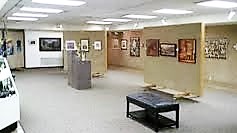Martin Luther as history’s first tweeter? An ongoing legacy, 500 years later: Three artifact shows demonstrate how Luther’s legacy is also as relevant and immediate as a Facebook feed. The Morgan Library exhibition in New York, “Word and Image: Martin Luther’s Reformation,” includes an extensive display of Luther-related materials. An exhibition at the Minneapolis Institute of Art focuses on the cultural and […]
Items included on this page come from a variety of sources. The perspectives conveyed may or may not express a Lutheran ethos. They can serve our instruction as discussion-starters, examples (positive and negative), and illustrations of intersections between God’s two kingdoms, intersections sometimes characterized by tension, sometimes by congruence. Inclusion does not imply endorsement.

What is Entertainment?
Delight in the Good: Students can use this essay to consider the social role and influence of media and entertainment and what sort of aesthetic to apply to ubiquitous modern media. “Our human ability to delight in the world means that entertainment is part of human nature. Today, technology makes entertainment so ubiquitous that our […]
Luther on Ecclesiastical Art
Three Principles of Ecclesiastical Art Production From the Writings of Luther: Luther commented and wrote about art many times, yet he did not give a single list of parameters that one could use in the proper production of ecclesiastical art. For this, one must look more broadly at the writings of Luther and deduce from them […]
The Met Museum of Art: Jerusalem, 1000 – 1400
Jerusalem as a Place of Desire and Death, at the Metropolitan Museum: Medieval Jerusalem was a busy market town at the nexus of trade routes. From combat to shopping, this show offers 200 objects from 60 international collections, a few spectacular but most fragile, everyday, and ordinary. If “next year, Jerusalem,” perhaps this year, the Met.
Lord’s House to Landlord’s House
Converting Churches to Condos Brings Logistical, Social Challenges: As congregations move to the suburbs and property values soar, increasing numbers of religious institutions are selling their properties in the city. Some of the churches are demolished, but those with architectural merit are often adapted by developers for new uses, usually residential.
What’s a Museum For?
A Museum of Us: Museums can provide a neutral, public space for reflecting on the role of religion in human experiences. Many people don’t regularly interact with those of differing religious traditions, much less visit their mosques, temples, churches, and synagogues. They rarely have the chance to see, smell, taste, and touch the elements of other […]
The Arid Architecture of Megachurches
The Higher the Dome, the Closer to God: This interview with photographer Lisa Auerbach explores how the architecture of megachurch buildings represent the faith and community of that faith community, but also the individualism, capitalism and personal agency represented by small businesses. The piece includes 15 photos and could be used in classes on liturgical arts, […]
Designer Fashion and the Fear of God
Putting the Fear of God in the Fashion Industry: Considering the name of the menswear brand, Fear of God, or that the promotional video for his latest collection features the church favorite “How Great is Our God,” it’s clear that this 39-year-old doesn’t shy away from the Christian faith that inspires his work. This profile takes […]
Catholic Art with a Modern Face
Alfonse Borysewicz’s lonely struggle gives Catholic art a modern face: Students can use this review of a current artist to consider the relationships among art, faith traditions, and current styles of expression. “No other Western religion has produced such a rich legacy of artistic inspiration and ideas; but none exerts the same kind of anxiety of […]
Scientism: More of the Same
The New Scientism: Still Fighting the Phantom War — This review of Excellent Beauty: The Naturalness of Religion and the Unnaturalness of the World by Eric Dietrich (Columbia University Press, 2015) can help students consider the claims about science explaining religion and whether awe, wonder, and beauty are adequate replacements for a coherent faith tradition.

